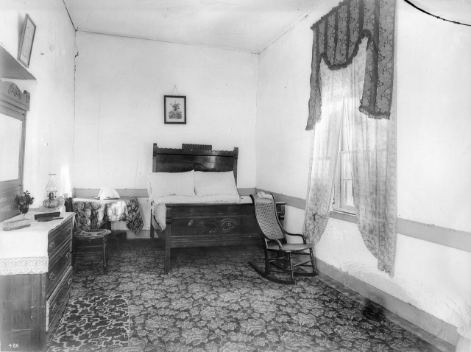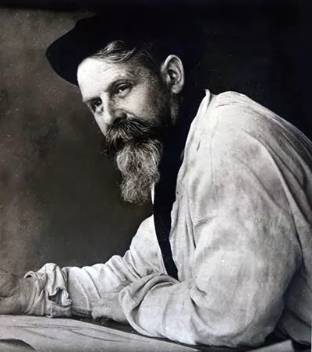Between 1870 and the First World War, the culture of Art Nouveau developed, in a period also called period. Art Nouveau's creations are characterized by the pursuit of a sensualist aesthetic ideal, that is, which appeals to the senses and excites them with an ornamental profusion and bright colors.
Decorative freedom was understood as a formal eclecticism: the freedom to combine the styles of the past, to reinterpret them, to play with them according to the criteria of intuition and subjective good taste.
Art Nouveau, also called modernism in some countries, has manifested itself not only in painting, sculpture and architecture, but also in applied or decorative arts and graphic arts. He has influenced the design of furniture, ceramics, glassware, lamps, jewelry, etc. In short, he conditioned the design of all kinds of useful objects of everyday life.
What is art nouveau?
It is the artistic revival developed between the 19th and 20th centuries. It was the end of the century or the good times...
This art refers to the intention to create a new, young, free and modern art. Once again, and like all movements, a break with the previous one, bearing in mind a clear idea: "the future has already begun".
Crafts are valued, but not forthd to industrial advances, and we aspire to democratize beauty or socialize art. To this end, the idea was promoted that even the most everyday objects should have aesthetic value, while being accessible to the entire population. This is why all kinds of useful objects in everyday life began to be visible as buffets, art nouveau armchairs sensual shapes that convert the living room of a house into a real art nouveau museum. Including street furniture, which has become very important (kiosks, metro stations, streetlights, garbage cans, urinals...).
On the aesthetic side, inspiration is evident in nature: plants and organic forms are intertwined with the central motif; the straight line has no interest, curves and asymmetry are preferred; everything is more sensual, seeking to satisfy the senses.
Thus, flowers, leaves, twisted stems, insects, female hair, fill the whole space.
In conclusion, it is arguable that within a much more complex movement that encompasses the entire spiritual life of the time, the so-called decadentism of the late nineteenth century, Art Nouveau came to realize the response to a demand for regeneration that crossed the collective common sense of the artists of the end of the century.
Art Nouveau style furniture
Art Nouveau furniture is usually characterized by delicately curved lines and floral motifs. The Art Nouveau furniture has no straight line. The backs of chairs and table legs are always elegantly curved outwards and are often combined with decorative ties.

The fabrics that cover Art Nouveau furniture are often sturdy and sumptuous and range from brocade, leather, linen to velvet. Artists create intricate wooden sculptures and graceful curves in Art Nouveau using tropical hardwoods.
Furniture of this style, and art in general, began to move towards welded arches and elegantly inflated chair backs in the 1880s. Art Nouveau began in Vienna, where it quickly gained popularity and spread to the rest of Europe; Belgium, France, Spain and Germany. Pieces combining elegance with Japanese décor with Gothic extravagance have become highly sought after, despite their high price. Each piece of art nouveau furniture was handmade and original. They are real works of art.
The fabrics that cover Art Nouveau furniture are often sturdy and sumptuous and range from brocade, leather, linen to velvet. Artists create intricate wooden sculptures and graceful curves in Art Nouveau using tropical hardwoods.
Furniture of this style, and art in general, began to move towards welded arches and elegantly inflated chair backs in the 1880s. Art Nouveau began in Vienna, where it quickly gained popularity and spread to the rest of Europe; Belgium, France, Spain and Germany. Pieces combining elegance with Japanese décor with Gothic extravagance have become highly sought after, despite their high price. Each piece of art nouveau furniture was handmade and original. They are real works of art.
The great cabinetmakers and architects of art nouveau
It has spread to fields such as painting, sculpture, architecture and design. He merged the industry with refined and poetic character.

Louis Majorelle
Undoubtedly one of the greatest cabinetmakers of the 19th century, Louis Majorelle (September 26, 1859-Nancy, January 15, 1926), a French cabinetmaker and decorator of the Art Nouveau movement of the École de Nancy, of which he was also vice-president.
Louis Comfort Tiffany
He was born on February 18, 1848 in New York, where he died on January 17, 1933. This American artist known for his works in glass tinted in the Art Nouveau style, has also painted, designed jewelry and furniture.

Victor Horta
(Gand, Belgium, 1861 - Brussels, 1947) Belgian architect. At the beginning of his career, from 1893, he created an original language, based on the predominance of the curved line and the integration of architectural and decorative elements, with which he became, with Henry Van de Velde, one of the pioneers and main representatives of architectural modernism in Belgium, as were Antoni Gaudi in Spain or Otto Wagner in Austria.
Antoni Gaudi
Reus Spain 1852- Spanish architect. He began working shortly after graduating in architecture at the age of twenty-six and his first commission was to design the streetlights in Reial Square. Very soon, he was discovered by the Catalan industrialist Eusebi Goell, who commissioned several of his masterpieces such as "Palacio Goell", "Parque Goell", etc. His most famous work is the Basilica of the Sagrada Familia in Barcelona.
Many of his works have been listed as UNESCO World Heritage Sites. It is not for nothing that Gaudi is considered the greatest representative of Catalan modernism.
Charles Rennie Mackintosh
A Scottish architect, designer and watercolourist, Mackintosh (1868-1928) was one of the most prominent representatives of the Arts and Crafts movement and the principal representative of Art Nouveau in his native country. His famous abstract floral motifs have never ceased to fascinate and embellish all kinds of objects.
His chairs are surely his strong point.
The art nouveau style
It is the first movement that has almost completely detached itself from the imitation of previous styles (Renaissance, Baroque, Neoclassicism, Romanticism, Louis XV etc.) in search of the identity of the urban and the modern, since a new century is being born.
He uses his own techniques: mechanical reproduction, such as woodcuts, poster art, printing.
The shapes
Aesthetically, they are flat, linear, ornamental images, which are reduced to an economy of means that gives them a singular beauty, they move away from figuration to focus on simple ornamentation, very close to industrial design.
Female human figures (nymphs, mermaids, voluptuous damsels, etc.)
Mainly whip or serpentine lines.
The shape of the furniture has been reduced to elegant curves decorated with brass, carved, gilded or ivory.
Materials
For furniture such as armchairs, chairs, buffets, dressers or sofas, exotic woods are used, may also metal for lamps, glass, sumptuous fabrics, velvet or leather.
For jewelry, the most used was platinum. Among stones, diamonds, sapphires and rubies are the most common. Coral and pearls were also used, as well as precious stones such as jade and lapis lazuli.
How to differentiate art nouveau from art deco
Art Nouveau was born in response to the exhaustion of classicist models and was quickly adopted by the richer bourgeoisie who wanted to differentiate themselves from others.
Art Deco, on the other hand, is not afraid to return to the models of the past, but also embraces the future and is fascinated by technology, machines and speed.
Art Nouveau is based on agileness, fluid, movement brought by curves and asymmetry.
Art Deco seems obsessed with geometric shapes, straight lines and angles, mass and symmetry as constant values.

